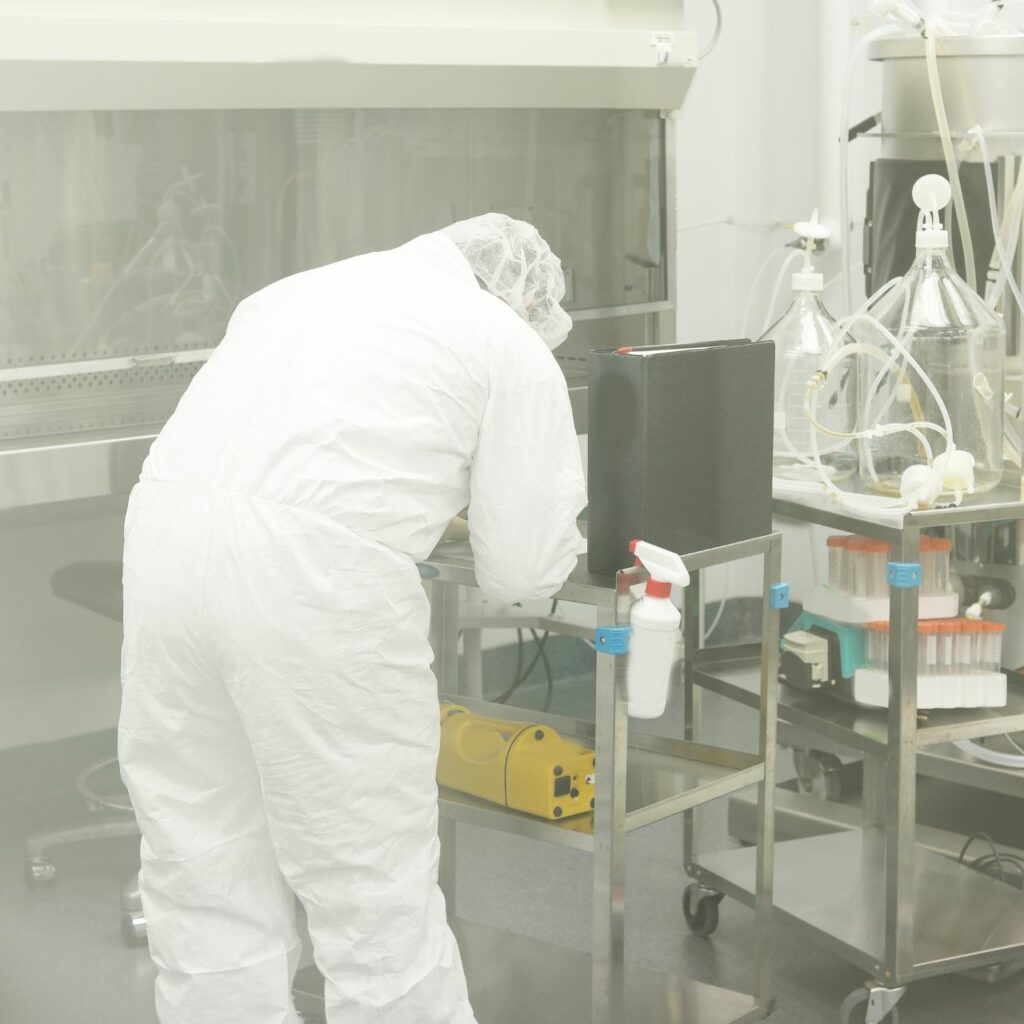A Guide to Cleanroom Furniture
Cleanrooms are integral to many companies requiring a controlled environment.
Keeping a cleanroom clean and functional is no easy task.
It demands not only the right cleaning processes and practices but also the right furniture.
Today we will delve into the world of cleanroom furniture, highlighting the types, requirements, and best practices for selection.

Cleanrooms are unique environments that demand specialized furniture to maintain their sterile conditions.
This furniture needs to be designed to minimize the chances of particle deposits, either by preventing particles from getting under the surface or lingering on the surface, thus compromising the integrity of the cleanroom.
Importance of Cleanroom Furniture
The right cleanroom furniture is crucial in maintaining the cleanliness of controlled environments. All furniture must meet stringent criteria to prevent and minimize particulate contamination.
Key Cleanroom Furniture Items
Cleanroom furniture can range from chairs and tables to gowning benches and racks. Here, look at the most common items of furniture found in cleanroom critical environments.
Cleanroom Chairs
Cleanroom chairs and stools should be designed to prevent material shedding and, in some cases, avert electrostatic discharges.
Like all furniture, it must also be comfortable for the lab technicians who spend hours sitting in these chairs.
Cleanroom Tables
Cleanroom tables should be sturdy and electrically conductive if the environment needs to be esd-safe. Stainless steel is often the material of choice, but plastic can also be used depending on the materials they come in contact with.
Gowning Benches & Racks
Gowning benches and racks store clothes and allow a clean room for workers to don cleanroom apparel safely. Apparel storage racks and benches can hold cleanroom crocs, shoes, lab coats, coveralls, and more.
Drawers and Counters
Drawers below the countertop should be easy to operate and preferably designed without handles to reduce the chances of contamination. The countertop should be resistant to chemicals, with Trespa being a popular choice due to its 24-hour chemical resistance, resistance to wear and scratching, and ease of cleaning.
Factors to Consider When Choosing Cleanroom Furniture
When selecting furniture for your cleanroom, several factors need to be considered.
ISO Specifications
The furniture should be made of non-shedding, nonporous material that’s easy to clean. It’s important to ensure that the furniture suppliers provide documentation that matches the ISO classification requirements of your cleanroom.
Hygiene
Cleanroom furniture should be easy to clean and maintain hygiene. Some medical-grade disinfectant wipes may corrode surfaces, which is why stainless steel or other metals are preferred.
Using cleanroom wipes can prevent damage to valuable furniture and machinery.
Durability
Cleanroom furniture needs to be durable. Furniture should not degrade quickly and should be relied upon for years regardless of environmental factors. Furniture should withstand varying temperatures, humidity, and disinfectants without shedding materials.
Cleanroom Furniture Material
One of the most important considerations when choosing cleanroom furniture is the material. The furniture should ideally be composed of antistatic materials to dampen or decrease electrostatic discharges, which can damage electrical components. Stainless steel is often the preferred material due to its resistance to rust and ability to withstand heavy and rigorous cleaning.
Comfort and Ergonomics in Cleanroom Furniture
While maintaining sterility is crucial, it’s also important to consider the comfort of the lab technicians who spend hours in the cleanroom. Chairs should be adjustable in height to ensure multiple employees can use a single workbench. If employees prefer to stand while working, standing aids should be provided.
FAQs about Cleanroom Furniture
Why is modular furniture important for cleanrooms?
Modular furniture is essential for cleanrooms as it boosts cleanliness and efficiency by facilitating easy cleaning, storage, and module interchanges.
What features should I look for in cleanroom laboratory furniture?
The best cleanroom furniture is easy to maintain, relocate, and install, allowing technicians to easily access needed items.
Why is it important that no welding is done?
Furniture made with a unique press fit ensures that no gaps form, preventing bacteria growth and potential contamination.
Conclusion
Investing in the right cleanroom furniture is key to maintaining a sterile environment and reducing the risk of contaminants jeopardizing your projects.
By understanding the various types of cleanroom furniture and the factors to consider when choosing them, you can ensure your cleanroom stays clean and efficient.
